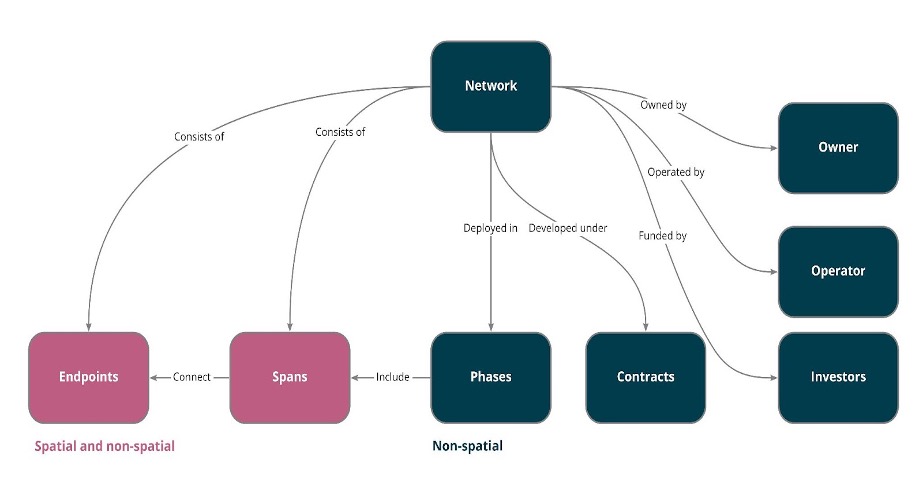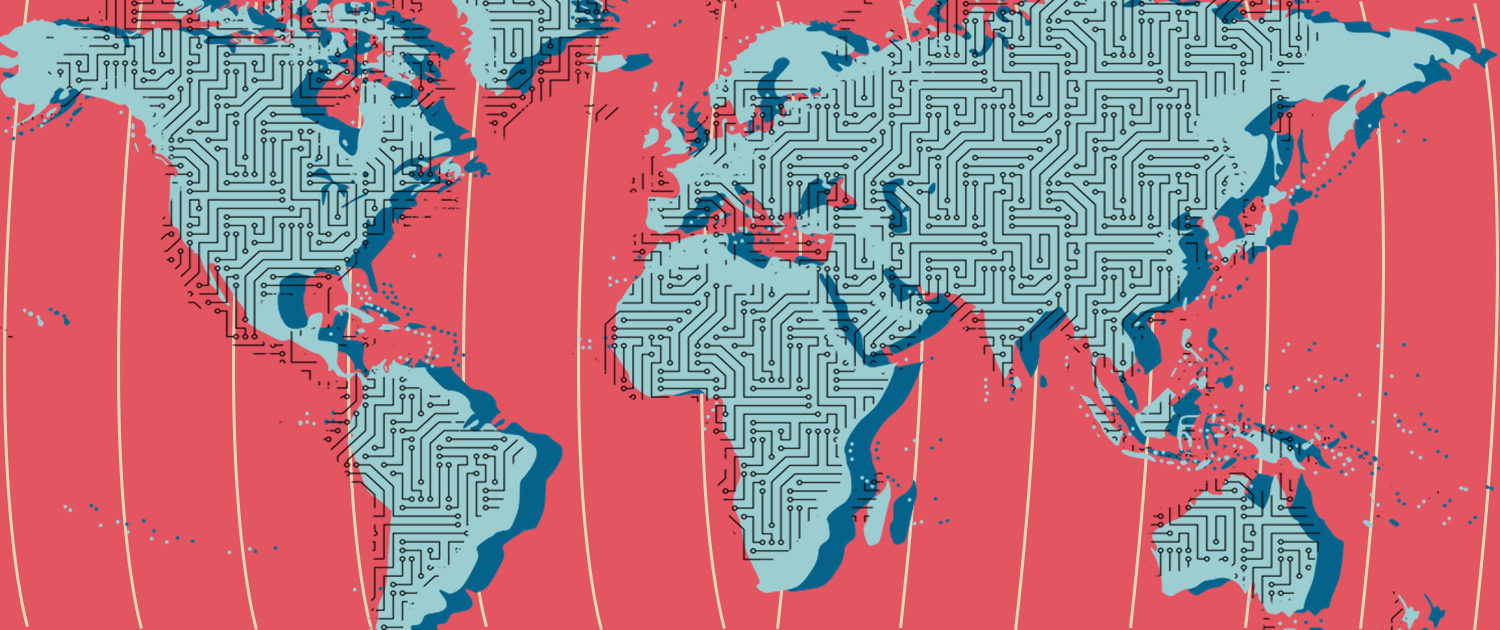The Open Fibre Data Standard (OFDS) is a global initiative to improve the availability of accessible and standardized terrestrial fiber infrastructure data.
Such standards streamline the process of making sense of the data and enable public and private sector stakeholders to make data-driven decisions.
What is Terrestrial Fibre?
As the name suggests, terrestrial fiber optic cables cross land — either underground or suspended from poles. They are an important component of each country’s core Internet network infrastructure and help connect landlocked countries — around 99% of Internet traffic is transmitted by terrestrial and undersea fiber optic cables.
Fiber optic networks broadly consist of three layers:
- Passive infrastructure, including non-electrical elements, such as dark fiber, ducts, and physical sites.
- Active infrastructure, including electrical elements, such as lit fiber, access node switches, and broadband remote access servers.
- Service layer, including services consumed by end-users, such as Internet, TV, and telephony, which are delivered using the active infrastructure.
The primary focus of OFDS is to provide information about the first two layers of the infrastructure. Given its foundational importance to the other layers that we rely on for our Internet and communication services, there is a growing need for public, up-to-date that can help guide decision-making about how to extend and improve connectivity infrastructure.
According to Steve Song, Policy Advisor at the Mozilla Corporation, “the Open Fibre Data Standard is essential to accurately assess the true extent of fiber optic infrastructure. The standard establishes a common framework for assembling network data from multiple operators, enabling a more accurate understanding of overall network resilience and redundancy.”
What Data Are We Talking About?
The OFDS describes:
- Spatial data, such as the physical location of fiber network infrastructure, including endpoints and span.
- Non-spatial data, such as the organizations that own, operate, and invest in fiber networks.
Having a standard format and making the data freely accessible will allow users to more easily share and compare it, and feed it into their models.

Who Benefits From the Data?
Open fiber data is useful to many different stakeholders and has several use cases, including:
- Infrastructure and network providers can use data to avoid overbuilding, reduce commercial risk and identify existing networks to connect to.
- Academics, researchers, and policy analysts can use data to understand the economic and/or social impact of investing in fiber infrastructure.
- National statistics offices, regulatory agencies, and inter-governmental organizations can use data to calculate internationally agreed indicators.
- Government, private and multi-lateral investors can use data to identify opportunities to invest in fiber infrastructure.
- Non-governmental organizations can use data to advocate for improved Internet access.
Where is the Standard at?
The first draft of the standard was released in July 2022. A new version is expected for release in mid-2023. See the OFDS GitHub repository for updates, discussions, and comments.
The initiative has also received positive endorsements from several key stakeholders, including regulators, technical communities, and leading telecommunications companies. This reception is encouraging, given the relevance of fiber as a critical infrastructure for many countries.
Being open with such data is not always straightforward, for example for business or security reasons. That is why the standard provides different options to show the information that providers are ready to share.
We at Internet Society Pulse believe this initiative has the potential to make a significant impact on the development of fiber optic networks and strengthen the Internet measurement community’s understanding of the capacity, resilience, and opportunities of such networks.
We invite you to join this effort, spread the news, share the information, and advocate! Let’s work together to evolve this standard for it to be used extensible around the world and help grow a secure, open, globally connected Internet for all.
The initiative is a multistakeholder effort involving the World Bank, the International Telecommunication Union (ITU), Mozilla, Liquid Intelligent Technologies, CSquared, and the Internet Society.


